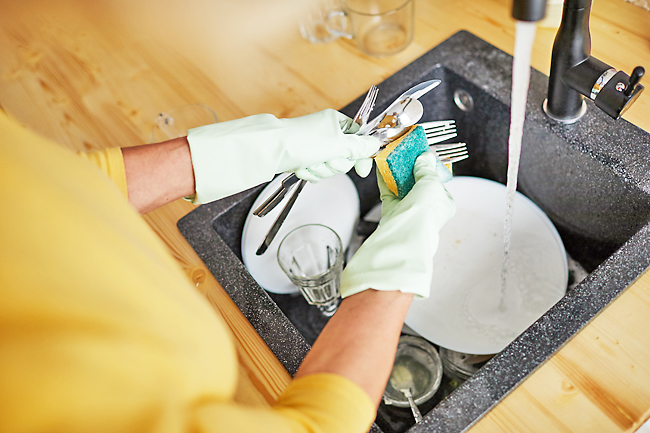Becky Krystal
THE WASHINGTON POST – There are a lot of tools in my kitchen that I use on a daily basis, if not multiple times a day – my chef’s knife, cutting board, and skillet just to name a few. But one thing that gets even more use, that is a common denominator that touches, literally, all these items, is my sponge.
And that is part of the problem.
”Because of their construction, sponges provide harbourage for any number and variety of microbiological organisms, many of which may be pathogenic,” according to the Food and Drug Administration’s United States (US) Food Code. In addition to food-borne pathogens, yeasts and molds can proliferate in sponges.
”The majority of people don’t know how to properly handle a sponge when it comes to the maintenance of it,” said extension professor and food safety specialist at the University of Maine Cooperative Extension Jason Bolton. Here’s what you need to know about caring for, cleaning and replacing your sponges.
CLEANING AND SANITISING THE SPONGE
Bolton said it’s essential to clean and sanitise your sponge regularly, ideally every day. You can do that through either heat or chemical means. First, wash the sponge with warm water and soap. The easiest next step is to microwave it on high for one minute. Make sure the sponge is still wet – too dry and it can catch on fire – and does not contain any metallic elements, such as in the scrubber, that can spark. Let the sponge cool before handling.
His other preferred method after washing is to soak the sponge in a bleach solution. Because the formula for diluting bleach can vary according to the product, the surface in question and what you’re trying to disinfect, Bolton said to check the label instructions for the bleach.

Assuming your bleach is 8.25 per cent sodium hypochlorite, you’ll need a quarter to a half teaspoon per quart of warm water. Soak the sponge in that solution for one minute.
The Agricultural Research Service, part of the USDA, found that a dishwasher with a drying cycle was almost as effective as microwaving, killing 99.9998 per cent of bacteria on a sponge, as opposed to the 99.99999 per cent in a microwave.
OTHER CARE AND MAINTENANCE TIPS
Moisture is one of the requirements for potentially harmful bacteria to multiply, and that matters because it’s easy to let your sponge sit around wet.
In between uses and cleaning, be sure to wring out whatever water you can. Store the sponge in a clean spot that allows for air circulation and reduces the possibility of cross-contamination, so not in the sink basin or even the dish rack, Bolton said. You can also buy a dedicated sponge holder.
After testing various models, America’s Test Kitchen (ATK) recommends looking for a holder with a large opening for dropping the sponge into, as well as an open construction to allow for efficient drying. It should attach securely enough to the sink to not be easily knocked off in the course of cleaning, which is where a slim profile comes in handy, too. ATK’s winning model, from SunnyPoint, features suction cups, while one of its runners-up from Yamazaki hangs from the faucet.
Whatever you choose, ATK suggests cleaning the holder with hot, soapy water at least once a month.
REPLACING
It’s hard to recommend a hard-and-fast rule for how often to replace a sponge, because much depends on how often it’s used and how it’s maintained, Bolton said. ”If you use it seldomly, you could get two weeks out of it,” is his rough guidance. It’s important to pay attention to the condition of the sponge.
If the sponge is torn, losing pieces or separating between the scrubber and soft side, it’s time to get a new one. Another tell: ”Once a sponge starts to smell, throw it out immediately,” advises the Iowa State University Extension and Outreach.
DITCH THE SPONGE ALTOGETHER
Bolton strongly recommends against using a sponge to clean equipment and surfaces that have been in contact with raw meat or fish, which can create cross-contamination problems.
In those scenarios, he recommends using a disposable sponge or a rag that can be used once and put immediately in the washing machine to be cleaned with detergent and hot water (a more eco-friendly alternative to paper towels). You can use clean kitchen towels for the rest of your dishwashing, too.






